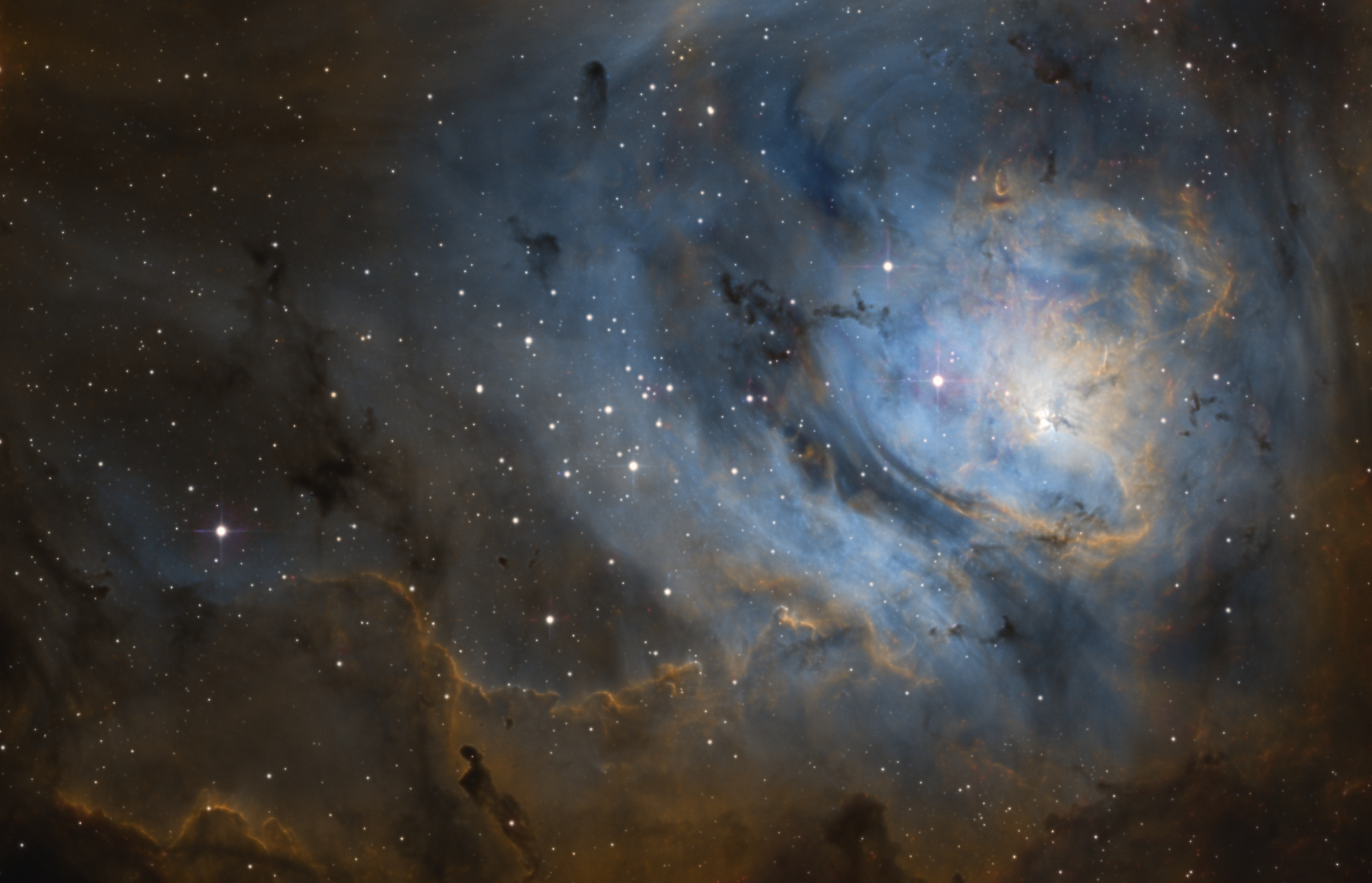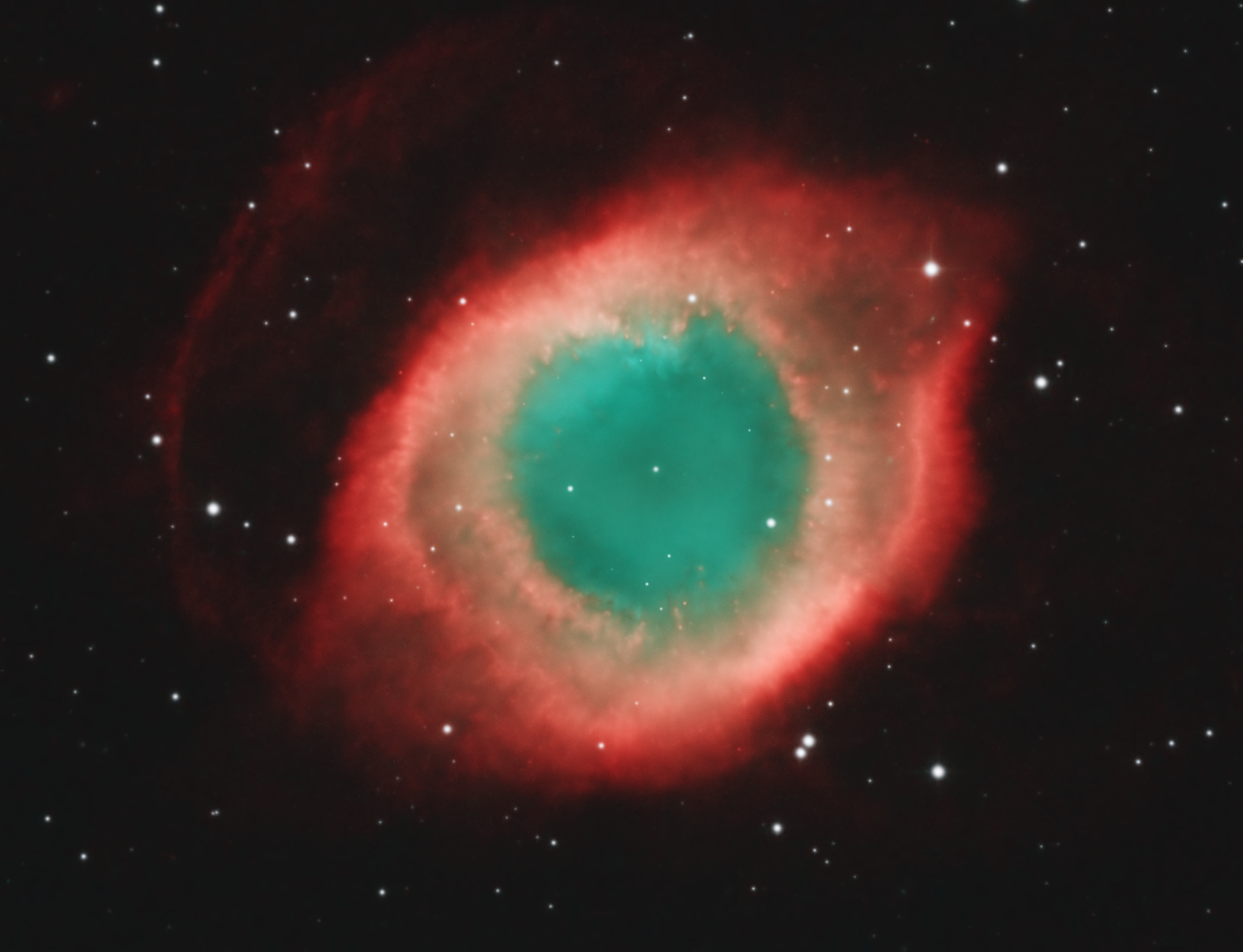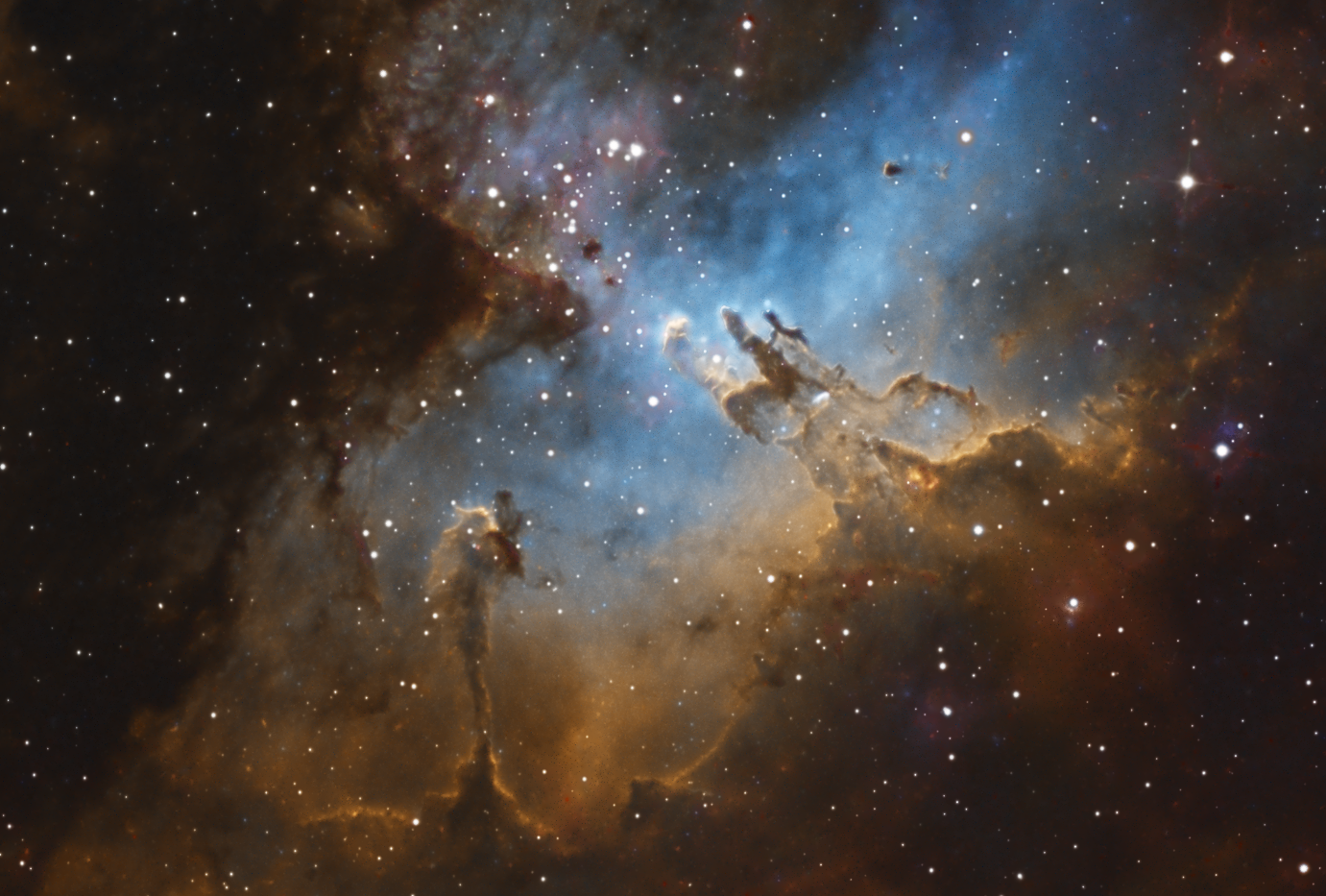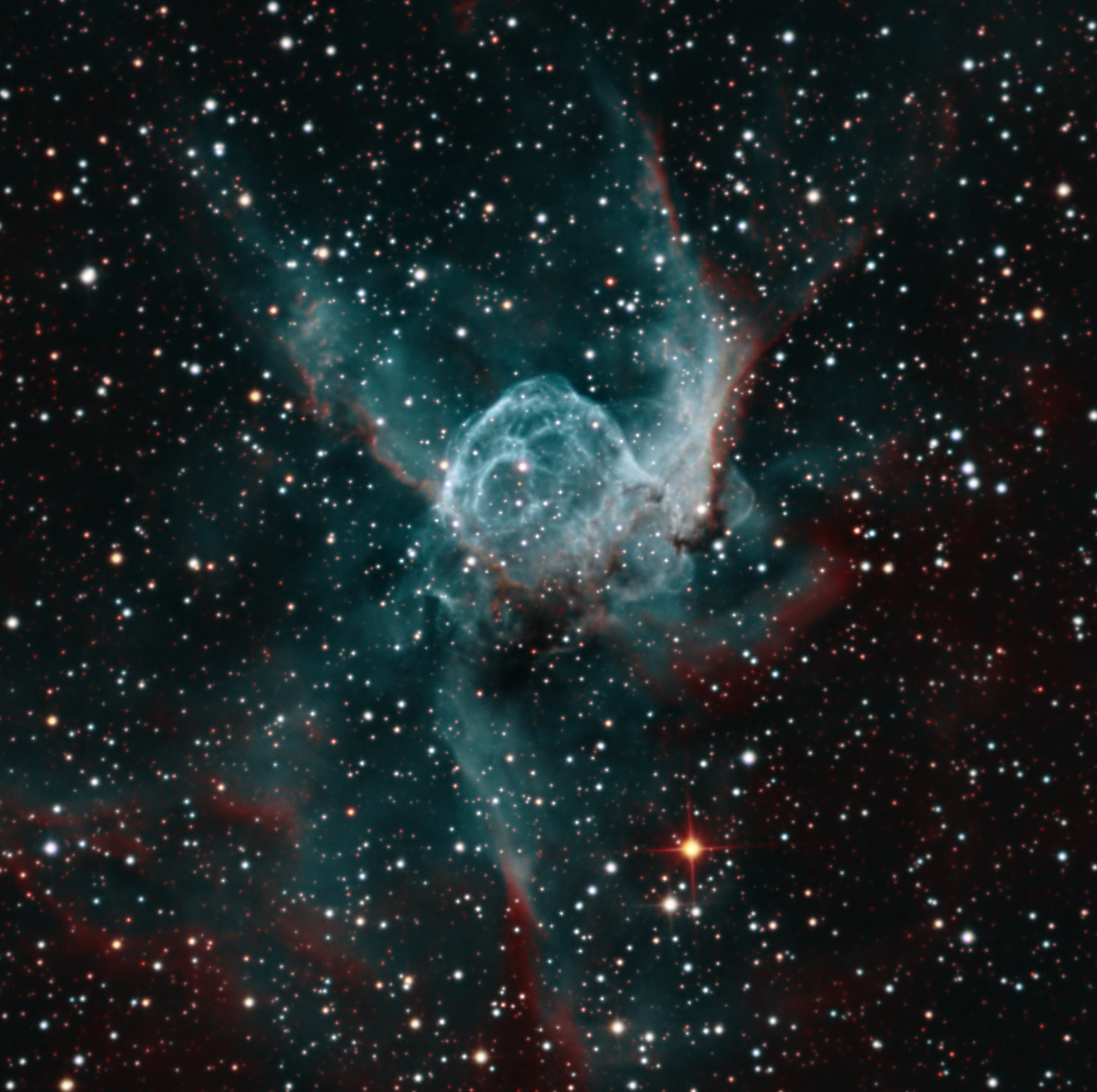-
Posts
1,636 -
Joined
-
Last visited
-
Days Won
1
Content Type
Profiles
Forums
Gallery
Events
Blogs
Posts posted by glowingturnip
-
-
excellent image, well done
-
1 hour ago, Jkulin said:
I have just seen this and it is the epitome of everything I dislike about remote imaging using other peoples data: -
[snip]
Indeed a beautiful image, but it should never have been selected for IOTD above far more worthy images! 🤬🤬🤬🤬🤬🤬🤬
completely agree, that kind of thing cheapens the whole IOTD process and makes it not worth pursuing (not that I stand a chance anyway). I might as well take a whole bunch of Hubble back numbers, tweak the colours a bit, and see how many likes I get.
Sure the capture details are stated there on Astrobin, but would they survive if a mainstream news source picked it up as an IOTD to publish it, or would they survive a retweet ?
-
lovely image - what's the image scale of that ?
-
3 minutes ago, glowingturnip said:
I'd be scrolling through my work showing someone new - "Wow, look at that one !" "Oh no, that one's not mine, I processed it from Hubble data", "oh".
in fact it happened just now ! I'm writing this from work, and a colleague just caught sight of that Cat's Eye - "wow, is that yours ?", "errm, no..."
-
 1
1
-
-
I've posted this before, but I have a hard time with the concept of renting time on other people's rigs.
I few years back I downloaded some data off the Hubble legacy data website and processed it - I was a tough process, a lot needed doing to the data to make it nice, and I think you'll agree that the end result is beautiful...

... but I never did feel that the image was mine, even with the caption. In fact in the end I found it embarrassing, like I was passing it off as my work - I'd be scrolling through my work showing someone new - "Wow, look at that one !" "Oh no, that one's not mine, I processed it from Hubble data", "oh". I ended up deleting it from my Flickr account in the end.
Conversely, over on the Beginner's forum, we occasionally get people posting up asking for processing help - they attach a link to a set of raw data and then various people have a go, bringing back various renditions of a final product. Are all those renditions still the OP's photo ? Yes, 100%, every time !
For owned remote rigs, the images do of course belong to the author, and I appreciate the effort to set it all up and the worry of making sure it's all maintained, secure etc, but I'm sorry to say there's still a part of me that thinks it's a little bit... cheating.
-
 5
5
-
-
1 hour ago, kirkster501 said:
I need to put a sign up on my desk saying "Steve, resist your urge to have very vibrant colours on your astro pictures" !!!!!!!!!
The last step in my processing workflow reads '24 hour eyeball filter'. ie put it down, come back to it 24 hours later and see if I still like it before publishing.
All very well, but I almost always break that rule.
-
 2
2
-
-
there are lots of online gif makers, wouldn't one of those have been easier ? eg https://giphy.com/create/gifmaker/
-
 1
1
-
-
ahaaaa, got it - nice.
Now I have Colonel Hathi's Elephant March playing in my head. Hup two three four...
-
 1
1
-
-
go on, what is it ? I like it
-
thanks all !
It's definitely there, isn't it - wonder what it is.
There's an HH object in there too btw:

-
Hi all,
Just wondering if anyone would know what this is ? Found it in my Rosette image - I'm thinking a Cometary Globule (a type of Bok Globule but with the tail swept away by stellar wind ), but then it's brighter than all the Boks are, and the tail isn't parallel to the other trunks that show the solar wind direction. A tadpole, perhaps ?
The full image is here if you're interested, click through for HD:
Cheers,
Stuart
-
 6
6
-
-
I think this one is an easy fix, you need to have the server enabled in PHD2 - in PHD, go to tools and 'enable server'
That will mean PHD starts listening to dither commands that APT is sending, I think at the moment it's not listening.
-
 1
1
-
-
just to mention, the tolerances on those MPCC diagrams are there for a purpose - through experiment I found I needed at least 57.5+1 on my M48. Could probably even go 0.25 to 0.5mm longer for better results, but I'm running out of thread.
I wrote a piece on collimation for another chap a while back - basically you'll need a cheshire *and* a well collimated laser if you're going to get it nailed - hope this helps -
-
ohhh yes. Go through a whole set-up, everything going smoothly, and then wonder why PHD is losing the guidestar just before starting the sequence off - look up, and...
Tear down, then look outside half an hour later, and...
-
8 minutes ago, alan potts said:
I m pleased I was a stick in the mud and got ST4 going, even though EQ's pulses seems better straight away?. I am grateful of all advice and in my halfbaked way I try.
Alan
I just read through your other thread, sounds like quite a journey. If you've got ST4 working, that's a massive result ! I'd have a bit of fun with that, and address all the other stuff in due time.
I have to admit that even though I have my mount connected via ASCOM for platesolving etc, I still perversely guide via ST4, based on a feeble excuse that my laptop only has two usb ports. Just works for me and I don't see any reason to change it.
-
 1
1
-
-
6 minutes ago, stash_old said:
Perhaps the real villain is SW for NOT providing an Ascom driver long ago - correct me if I am wrong but SW Ascom driver is ,at most, 3 years old !!!
Completely agree ! That was a huge source of frustration for me, drove me to ST4
-
 1
1
-
-
"is the handset of any use if using a laptop?" - I certainly found it useful last time out - was setting up with just about 1 degree before a pier flip, wanted to start off pre-flipped so I could go the rest of the night, but every time I tried to 'centre here' with SG Pro, it flipped the mount to the wrong side again (with me scrabbling around trying not to get the cables snagged). In the end I just nudged it to where I wanted it framed with the handset. Normal use I'd use the handset to go to a nearby star for focussing after my one-star align, then plate-solve from there. I also like to turn PECC on. But anyway, why disable the handset when you don't have to ?
-
 1
1
-
-
at the risk of throwing a spanner in the works, do you really need to be using EQMOD ? Are you using a Skywatcher mount ?
I believe EQMOD mainly came into being since in their infinite wisdom Skywatcher didn't bother shipping an ASCOM driver with their mounts, so EQMOD as a third-party piece of software filled that functionality. However, just my view, but as a driver it's very clunky - it needs its own GUI, its own hardware and it renders the handset useless - not what you want from a driver.
However there is a proper Skywatcher ASCOM driver now, 4th from bottom of this list - https://ascom-standards.org/Downloads/ScopeDrivers.htm
With that driver installed, and a USB to RS232 converter (make sure you get one with the latest chipset) I have my laptop running PHD and SGPro talking directly to the mount (an AZEQ6GT) via a cable into the handset, the handset still works, and no extra GUI's. I'm sure APT would work the same way, they are all ASCOM-compliant programmes, and with the driver installed they will be able to discover your mount directly.
The handset connection is RS232 and you want USB on your computer, hence the need for that converter.
-
are there any bits of the region that suit a longer focal length (1000mm, just under 1 arc-degree) ? I've got a week in Spain next week and hopefully the weather allows.
-
-
oh, I'd hate to hold myself out as an expert in collimation - took me a lot of trial and error to get my 2ndry into the right position, and probably not by approved means ! But here goes, and ppl more knowledgeable than me please chime in.
As you know, there are four things that have to be right - the distance along the axis of the scope where the 2ndry is so it's properly pointing through the focusser, the rotation of the 2ndry so it's square to the focusser, then 2ndry mirror tilt and primary tilt.
To get the first bit, the position along the scope axis, you will need to be able to see both the left and right hand edge of the mirror or clips (as you look at it through the cheshire) and they should be equally spaced from the edge as they appear in your cheshire. If you can't see the whole of the mirror or all of the clips, maybe you do need the short cheshire. To adjust, slacken off all three of the little screws and then adjust with the big screw in the middle - being very careful not to unscrew it all the way, else the 2ndry will fall out, and being very careful not to touch the glass or let things flop about ! The three surrounding screws push against the mirror base plate and the centre screw pulls it, so if your 2ndry needs to go further inside the tube you would loosen the centre screw, and vice versa.
Unfortunately while you're doing this, the 2ndry is obviously completely out of collimation, so even when you think it's right, once you've re-tightened the 3 screws and adjusted the tilt back, you can find you're way off still, or even worse ! A little trick though, you can kind of 'hold' the secondary in collimation while the three screws are loose - hold the base of the mirror (without touching the glass and without bending anything) then as you're looking through the cheshire, tilt the mirror by hand till the crosshairs on the cheshire line up with the spider veins, that's a rough collimation, and while you've got it lined up like that, then check the left and right hand edges of the primary, readjust, look again, etc.
Then you need to adjust the rotation of the 2ndry in the tube so that it's square to the focusser. Looking through the cheshire, the mirror should appear round, not oval, and the mirror edges, or clips, should be same distance from top and bottom and the same distance as the left and right ones are. When the three screws are slack, the secondary is free to be rotated around the centre screw. You don't need to adjust the centre screw any more, since you've got the distance right, but now you will be slackening the 3 screws, rotating the mirror by tiny amounts, checking in the cheshire while holding it in collimation again, retightening the 3 screws, finding you've disturbed the rotation whilst tightening them, starting again, repeat, repeat.
These two steps are definitely the hardest part, but once done once, it'll hardly ever need doing again. As I said, it took me a whole afternoon, and I started over several times.
The two mirror tilts probably need doing every time, and are much quicker with a laser than by eye - it does need to be a properly collimated laser though, and it sounds like you've got a dud one. The Hotech ones are good.
Just reading that back, it sounds like a nightmare doesn't it ! and we've not even mentioned coma correction yet. It takes a real masochist to use a fast Newtonian I reckon, mind you, I love mine.
-
 1
1
-
 1
1
-
-
4 hours ago, RolandKol said:
Just not sure, which one is better for PDS, - short or long one... Short are used for refractors after focuser change, but long ones do not show mirror clips on PDS , - a bit too long.
I use a long one with my 200PDS - with the secondary properly positioned I can *just* about see all of the mirror through it, at which point I'd say I'm good.
Just putting the cheshire, or even a laser into a focusser that has the two tightening knobs isn't even going to help either, you really need one of those compression collar style focussers to make sure the collimation tool is square in the tube.
It's a pain - my 200PDS was well out of collimation when it came new, but it was in Spain, maybe came from handling during shipping. Took me a whole afternoon to get the 2ndry right with the Cheshire, but with that done, it's now just a 5 minute job with the laser, then pop the cheshire in afterwards for a quick pat on the back at how nicely lined up it looks
-
 1
1
-
-
-
very nice ! get a proper feel of the depth of it, the dust in front of the background stars



















Barnard 344 and vicinity
in Imaging - Deep Sky
Posted
definitely putting it on my to-do list.
Is it me, or does that little twist of dark nebula look like seaweed ?